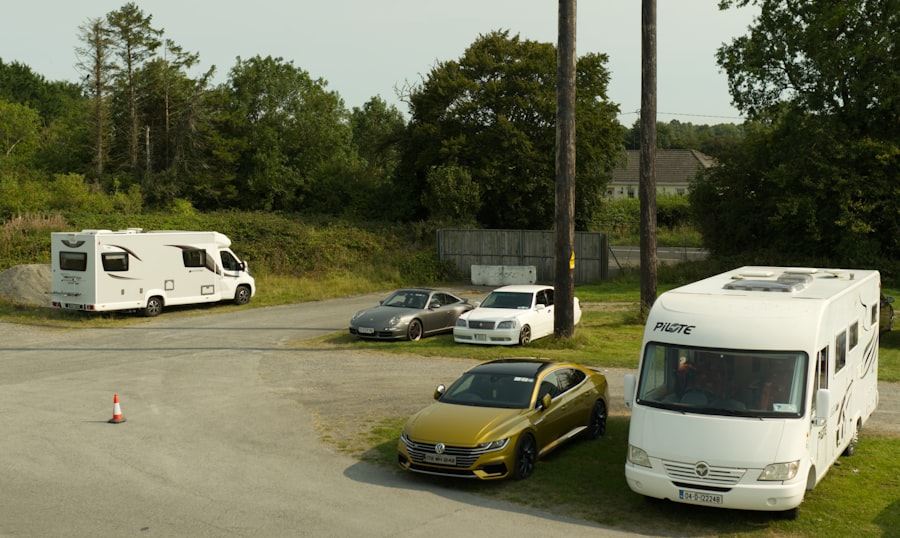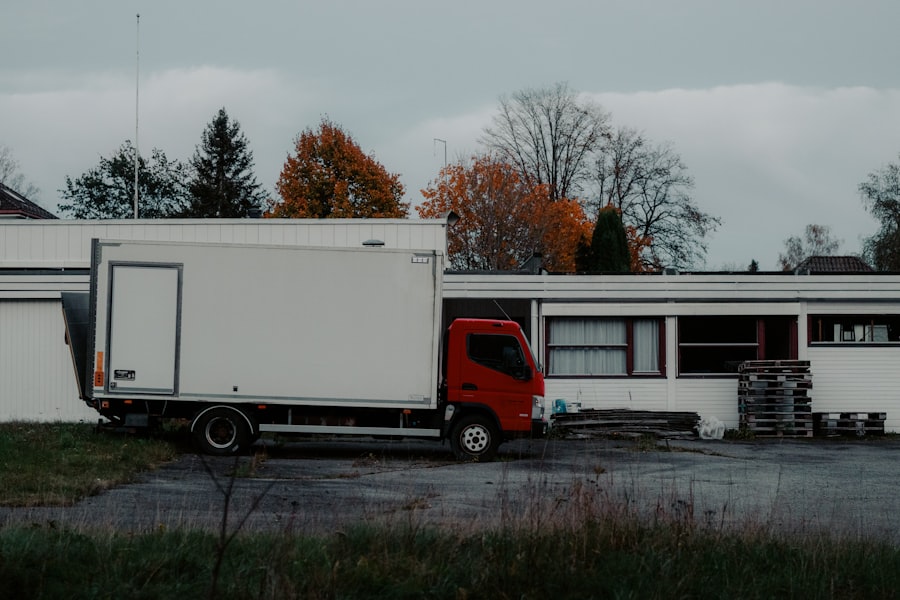Under skirting serves a crucial role in the overall functionality and longevity of mobile homes and trailers. It acts as a protective barrier that shields the undercarriage from various environmental elements, including moisture, pests, and debris. By enclosing the space beneath the trailer, under skirting helps to maintain a stable temperature within the home, which can be particularly beneficial in regions with extreme weather conditions.
This insulation effect not only contributes to energy efficiency but also enhances the comfort of the living space. Moreover, under skirting plays a significant role in aesthetics. A well-installed skirting system can elevate the visual appeal of a mobile home, providing a finished look that blends seamlessly with the surrounding landscape.
It can also prevent unsightly views of the undercarriage, which may include plumbing, wiring, and other mechanical components. This aspect is particularly important for homeowners who take pride in their property and wish to maintain a certain standard of appearance.
Key Takeaways
- Under skirting enhances insulation and protects the trailer’s underside from pests and weather damage.
- Common materials for under skirting include vinyl, metal, and insulated panels, each with unique benefits.
- Proper installation involves securing panels tightly and ensuring adequate ventilation to prevent moisture buildup.
- Regular maintenance, such as cleaning and inspecting for damage, extends the lifespan of under skirting.
- Costs vary based on material choice and installation method, and owners should also consider local regulations and alternative options.
Benefits of Trailer Under Skirting
The benefits of trailer under skirting extend beyond mere aesthetics and protection. One of the primary advantages is its ability to improve energy efficiency. By insulating the area beneath the trailer, under skirting helps to regulate indoor temperatures, reducing the need for excessive heating or cooling.
This can lead to significant savings on energy bills over time, making it a wise investment for homeowners looking to cut costs. In addition to energy savings, under skirting can also enhance the structural integrity of a mobile home. By preventing moisture accumulation and protecting against pests such as rodents and insects, skirting helps to mitigate potential damage that could compromise the home’s foundation.
This protective measure can prolong the lifespan of the trailer and reduce the likelihood of costly repairs in the future. Furthermore, many insurance companies recognize the value of proper skirting and may offer lower premiums for homes that are adequately protected.
Different Types of Under Skirting Materials

When it comes to selecting materials for under skirting, homeowners have several options to choose from, each with its own set of advantages and disadvantages. Vinyl skirting is one of the most popular choices due to its durability and low maintenance requirements. It is resistant to fading, cracking, and warping, making it an ideal option for various climates.
Additionally, vinyl skirting is available in a wide range of colors and styles, allowing homeowners to customize their look. Another common material is metal skirting, which offers exceptional strength and longevity. Aluminum and galvanized steel are often used for this purpose, providing a robust barrier against environmental elements.
Metal skirting can be particularly advantageous in areas prone to severe weather conditions, as it is less likely to be damaged by high winds or heavy snowfall. However, metal skirting may require more maintenance than vinyl options, as it can be susceptible to rust if not properly treated. Wood skirting is another alternative that appeals to those seeking a more natural aesthetic.
While it can provide excellent insulation and a rustic charm, wood requires regular maintenance to prevent rot and insect infestations. Homeowners must weigh the visual appeal against the upkeep required when considering wood as a skirting material.
How to Install Under Skirting
| Step | Description | Tools/Materials Needed | Estimated Time | Tips |
|---|---|---|---|---|
| 1. Prepare the Area | Clear the area around the base of the structure and remove any debris or obstacles. | Gloves, broom, shovel | 30 minutes | Ensure the ground is level for easier installation. |
| 2. Measure and Cut Skirting Panels | Measure the perimeter and cut skirting panels to fit the dimensions. | Measuring tape, saw, pencil | 1 hour | Double-check measurements before cutting to avoid waste. |
| 3. Install Support Posts | Place vertical support posts at regular intervals to hold the skirting panels. | Posts, hammer, nails or screws, level | 1-2 hours | Use a level to ensure posts are straight for a neat finish. |
| 4. Attach Skirting Panels | Secure the skirting panels to the support posts using nails or screws. | Drill or hammer, nails or screws | 1-2 hours | Start from one corner and work your way around for consistency. |
| 5. Install Ventilation | Add vents to allow airflow under the structure to prevent moisture buildup. | Vents, drill, screws | 30 minutes | Place vents evenly spaced for optimal ventilation. |
| 6. Finish and Inspect | Check all panels and posts for secure attachment and make any necessary adjustments. | Inspection tools, screwdriver, hammer | 30 minutes | Ensure there are no gaps or loose panels to keep pests out. |
Installing under skirting may seem daunting at first, but with proper planning and execution, it can be a manageable DIY project. The first step involves measuring the perimeter of the trailer to determine how much material will be needed. It’s essential to account for any irregularities in the ground or trailer height to ensure a snug fit.
Once measurements are taken, homeowners should gather all necessary tools and materials, including stakes, screws, and any required fasteners. The installation process typically begins with preparing the ground beneath the trailer. This may involve leveling the area or clearing away debris that could interfere with the skirting’s placement.
After preparing the site, homeowners can begin attaching the skirting panels to the trailer’s frame using screws or brackets designed for this purpose. It’s crucial to ensure that panels are securely fastened and that there are no gaps that could allow pests or moisture to enter. Once all panels are installed, homeowners should consider adding ventilation openings to promote airflow beneath the trailer.
This step is vital for preventing moisture buildup, which can lead to mold growth and structural damage over time. Finally, a thorough inspection should be conducted to ensure that everything is properly secured and that there are no visible gaps or weaknesses in the installation.
Maintenance and Upkeep of Under Skirting
Regular maintenance is essential for ensuring that under skirting remains effective over time. Homeowners should periodically inspect their skirting for signs of damage or wear, such as cracks in vinyl or rust on metal panels. Any issues should be addressed promptly to prevent further deterioration or potential pest infestations.
For instance, if a section of vinyl skirting becomes cracked due to extreme temperatures, it should be replaced immediately to maintain its protective function. Cleaning is another important aspect of maintenance. Over time, dirt and debris can accumulate on skirting panels, detracting from their appearance and potentially leading to mold growth.
Homeowners should regularly wash their skirting with mild soap and water to keep it looking fresh and prevent any buildup that could compromise its integrity. For metal skirting, applying a protective coating can help prevent rust and extend its lifespan. Additionally, homeowners should remain vigilant about checking for signs of pest activity beneath their trailers.
If any evidence of rodents or insects is found, immediate action should be taken to address the issue before it escalates into a more significant problem. This may involve sealing any gaps or holes that could serve as entry points for pests.
Cost Considerations for Under Skirting

The cost of under skirting can vary significantly based on several factors, including material choice, installation method, and regional pricing differences. Vinyl skirting tends to be one of the more affordable options available, with prices typically ranging from $1 to $3 per linear foot. In contrast, metal skirting can be more expensive due to its durability and strength, often costing between $3 and $6 per linear foot.
Installation costs also play a significant role in overall expenses. Homeowners who choose to hire professionals for installation may incur additional labor costs that can range from $50 to $100 per hour depending on local rates and complexity of the job. Conversely, those who opt for a DIY approach can save on labor costs but must factor in their time and any tools they may need to purchase or rent.
It’s also important for homeowners to consider long-term savings when evaluating costs. While investing in higher-quality materials may require a larger upfront expenditure, these options often provide better insulation and protection against pests and moisture, ultimately leading to reduced energy bills and maintenance costs over time.
Regulations and Codes for Under Skirting
When installing under skirting for mobile homes or trailers, it’s essential to be aware of local regulations and building codes that may apply. Many municipalities have specific requirements regarding skirting installation to ensure safety and structural integrity. These regulations often dictate factors such as materials used, ventilation requirements, and installation methods.
For instance, some areas may require that skirting materials be fire-resistant or treated for pest prevention. Additionally, local building codes may specify minimum ventilation openings needed beneath the trailer to promote airflow and prevent moisture buildup. Homeowners should consult their local building department or zoning office before beginning installation to ensure compliance with all applicable regulations.
Failing to adhere to these codes can result in fines or complications when selling the property in the future. Therefore, it’s prudent for homeowners to conduct thorough research and possibly seek professional advice if they are unsure about specific requirements in their area.
Alternative Solutions for Mobile Home Owners
For mobile home owners seeking alternatives to traditional under skirting solutions, several options exist that can provide similar benefits while catering to individual preferences or budget constraints. One such alternative is using lattice panels made from wood or composite materials. These panels offer an attractive way to enclose the space beneath a trailer while allowing for adequate ventilation.
Another option is utilizing landscaping features such as shrubs or decorative fencing around the perimeter of the mobile home. While this approach may not provide as much protection against pests or moisture as traditional skirting materials, it can enhance curb appeal while offering some level of concealment for the undercarriage. Additionally, some homeowners may consider using insulated foam boards as an alternative form of insulation beneath their trailers.
These boards can provide effective thermal protection while being lightweight and easy to install. However, they may require additional measures to protect against pests or moisture infiltration. Ultimately, mobile home owners have various options available when it comes to under skirting solutions.
By carefully considering their needs and preferences while weighing factors such as cost, maintenance requirements, and local regulations, they can make informed decisions that best suit their unique situations.



